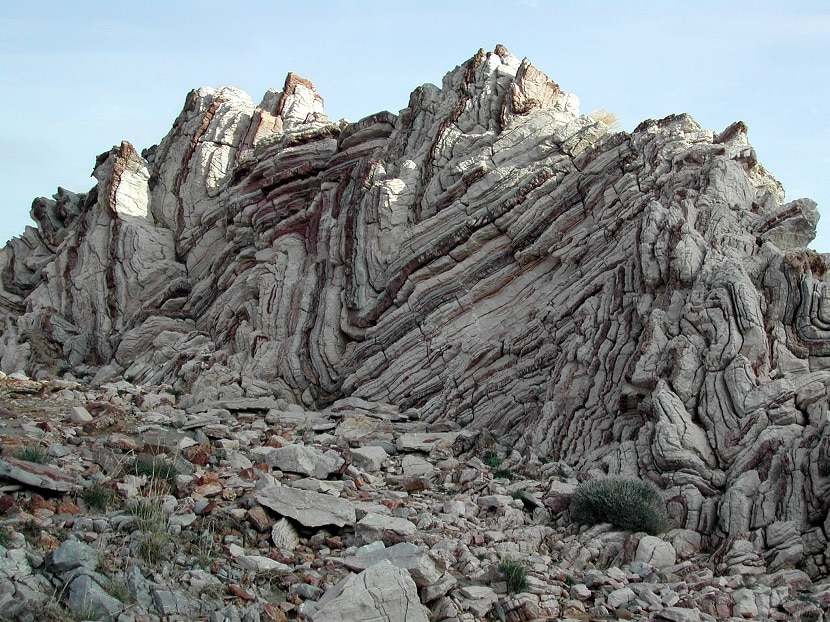
When in geology we talk about the structure and composition of the earth's crust, it is inevitable to talk about the folds. Folds are the most common structures that affect all geological materials. The best known are the anticline and syncline. For this reason, we are going to dedicate this entire article to talking about the structures and importance of the different types of folds and their characteristics.
If you want to know more about the anticline and syncline fold, this is your post.
What are folds
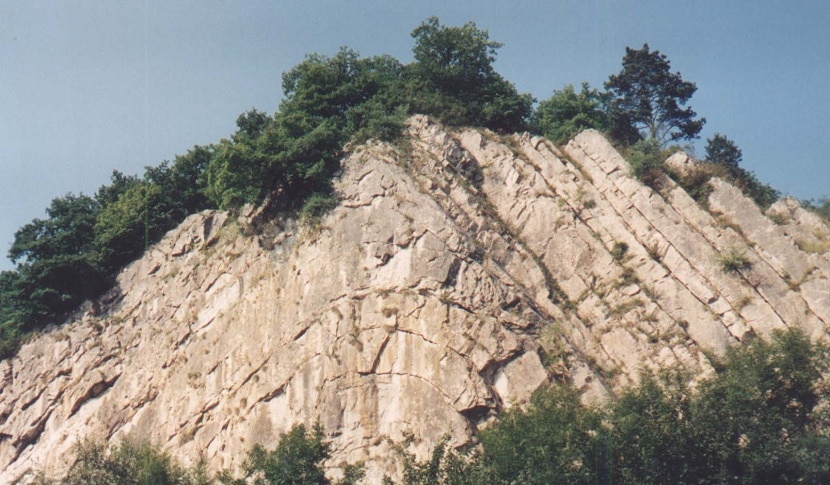
The folds are nothing more than structures that are formed as a result of the deformation of geological materials. It is important to add that these folds of materials do not produce a fracture. These geological structures are formed through a plastic deformation that is formed through the pressure of some tectonic stresses, both compression and expansion.
If we remember everything related to Tectonic plates we can see that the earth's crust is made up of different tectonic plates and they are not fixed. There are the calls convection currents of the mantle that make the plates move continuously and this is the reason why the continents are in continuous movement. Therefore, the folds are formed thanks to the existence of different materials with a plastic or deformable behavior such as sedimentary rocks.
Parts of a fold
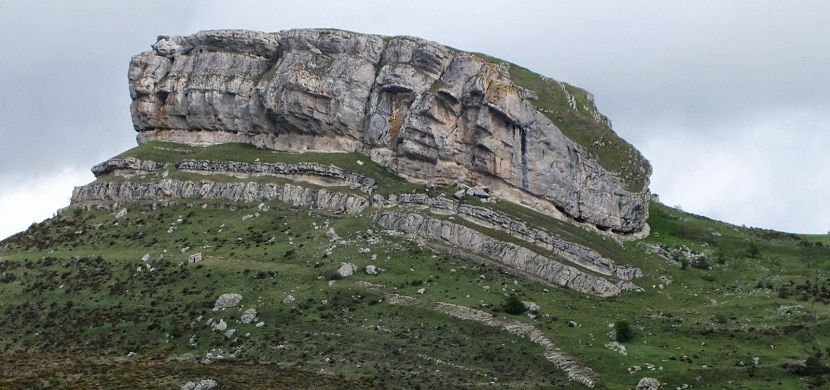
Each fold has different important parts to analyze. The flanks are the lateral planes that form the fold. 2 flanks are needed to form a fold. This component can be interpreted as you follow the surface where the materials are stratified.
Another part of a fold is the axis or hinge and it is the line that corresponds to the massive curvature of the fold and is formed by the intersection between the flanks and the different layers or stratification surface. The axial plane is another part of a fold and is formed by the junction between lines of the axes of each layer of the fold. Depending on the axial plane of each fold, it will have different dip angles.
Classification of folds
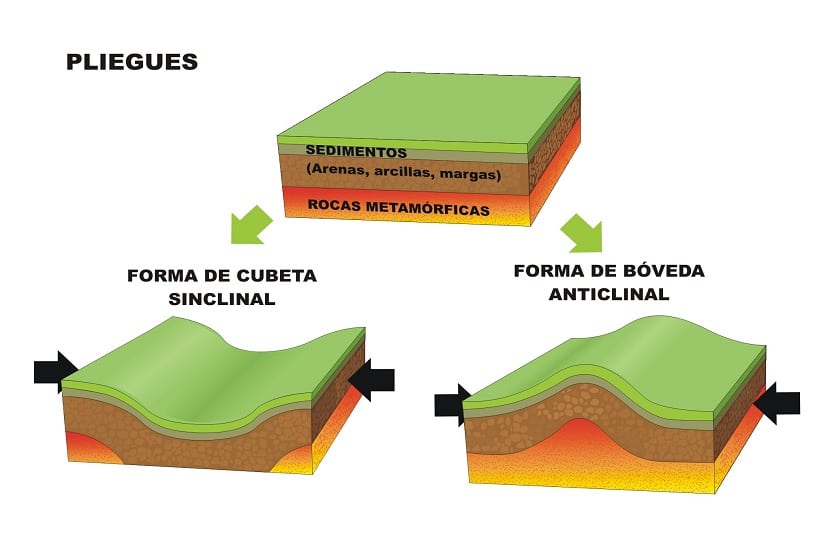
Now we are going to talk about the different types of folds according to their composition and shape. There are several ways to classify the folds and the most common are those that are related to the way the main elements are oriented. The axial plane, the axis and the angle between the flanks are what make the difference between one type of fold and another.
The first classification we have is according to its shape. This classification is divided into: anticline and synclinal fold. There is also the symmetrical fold. The second classification is based on the dip of the axial plane: here we have the inclined, inverted and lying fold. According to the axis of the fold we have the cylindrical and conical ones.
Another of the not so widely used classifications are those that use the angle between the limbs. Here we have the following folds:
- Weakly bent, interlimbal angle greater than 120 °
- Open fold, interlimbal angle 70 ° to 120 °
- Closed fold, 30 ° to 70 ° interlimbal angle
- Narrow fold, 10 ° to 30 ° interlimbal angle
- Isoclinal fold, interlimbal angle = 0 °
Anticline and syncline

The anticline fold is characterized by having a convex shape towards the top. This is because the younger materials that make up the fold are at the top, while the older materials are forming the core. There are times when we cannot know the age of the materials and in these cases it is better to name this structure as antiform.
On the other hand, we have the synclinal fold. Its main characteristic is that it is concave towards the top. This is because the younger materials are in the core, while the older ones form the bottom. In the same way as with the anticline fold, if we do not know how old the materials are, it is better to name this structure as shapeless.
When we classify a type of fold according to the dip of the axial plane, we must take into account the type of angle we have. In these cases we find symmetrical, inclined, inverted and lying folds. All of these folds have a range of between 0 degrees and 90 degrees.
Symmetric folds are those where the angle formed by the axial plane is equal on both sides. In this case, the angle it makes with the axial plane is vertical. The other type of fold is inclined in such a way that one of the flanks has a greater dip angle with respect to the other.
Morphology of the anticline and synclinal fold
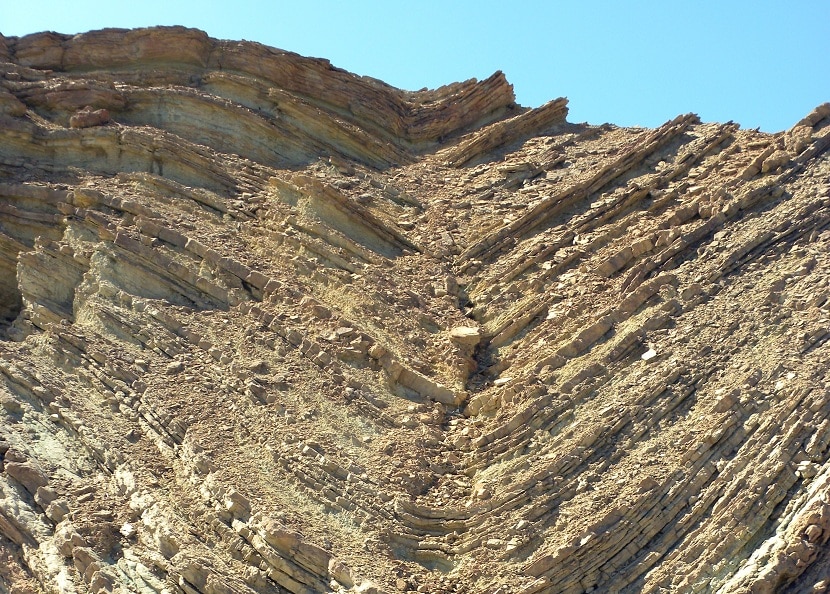
We are going to begin to describe the anticline fold. It has its center with a symmetrical axis. The two sides of the anticline show different tilt directions. The strata forever lean to the flanks. From the center to the flanks the manteo gradually increases. The manteo, however, in the center is smaller or zero.
We proceed to describe the synclinal fold. The center is an axis of symmetry. The two sides of the syncline show different tilt directions. The layers of its interior always lean towards the nucleus. The manteo, in this case, is also zero. The youngest strata emerge in the center and the oldest remain on the flanks.
To be able to see these fold in geological maps it is as simple as identifying the symmetric repetition of the materials with respect to a central axis. This is the intersection of the axial plane with the topographic surface. In this symmetrical repetition of materials we must not take into account the outcropping of the materials. This is because the scratchiness and surface thickness of the materials It depends on the degree of dip that the materials have and the surface we are on.
As you can see, the whole issue of folds is something quite complex. I hope I have helped identify the anticline and syncline folds on a geologic map.